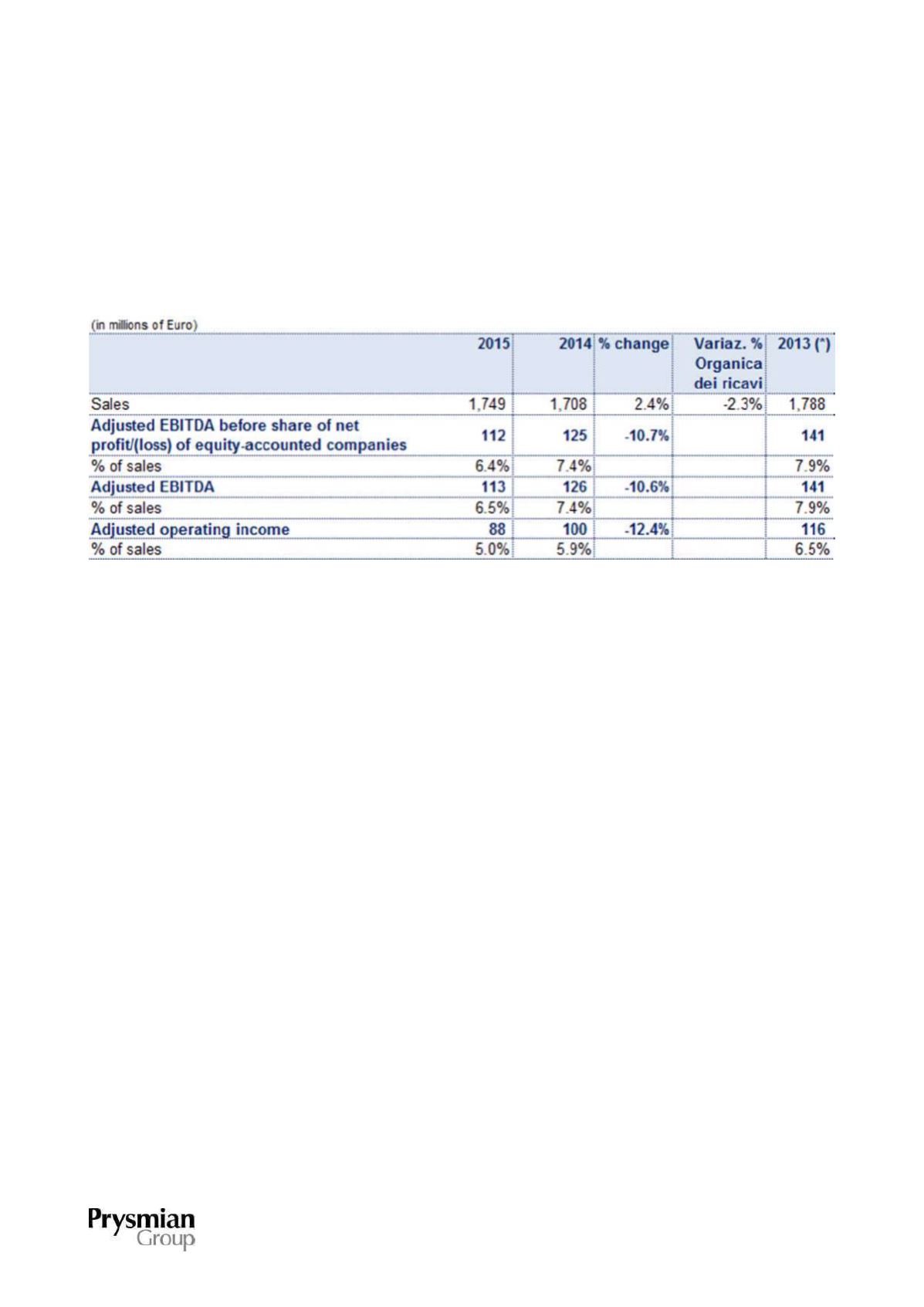

PRYSMIAN GROUP | DIRECTORS’ REPORT
64
By contrast, Prysmian Group suffered in South America, particularly in the Brazilian market, where demand
remained negative and price pressure started to be felt; however, performance in Argentina was positive.
Given the factors described above, Adjusted EBITDA for 2015 came to Euro 128 million, up from Euro 108
million in the previous year.
INDUSTRIAL & NETWORK COMPONENTS
(*)
The originally published 2013 figures have been restated following the introduction of IFRS 10 and IFRS 11 and a new method of
classifying the share of net profit (loss) of associates and joint ventures.
The extensive range of cables developed specially for certain
industries
is characterised by the highly
specific nature of the solutions offered. In the transport market, Prysmian cables are used in the construction
of ships and trains, and in the automotive and aerospace industries; in the infrastructure market, the principal
applications for its cables are found in railways, docks and airports. The product range also includes cables
for the mining industry, for elevators and for applications in the renewable energy field (solar and wind
power), cables for military use and for nuclear power stations, able to withstand the highest radiation
environments. The range of products for the Oil & Gas industry includes low and medium voltage power
cables, and instrumentation and control cables for use in the oil and petrochemicals industry (offshore
platforms, onshore extraction facilities, refineries, chemical plants for fertilizer production, and so on).
Lastly, the Group produces accessories and
network components
, such as joints and terminations for low,
medium, high and extra high voltage cables and submarine systems, to connect cables with one another
and/or connect them with other network devices, suitable for industrial, construction and infrastructure
applications and for use within power transmission and distribution grids.
MARKET OVERVIEW
Trends on Industrial cable markets in 2015 displayed considerable inconsistencies between the various
business lines and large disparities between the different geographical areas. The common tendency was for
more fragmented and erratic demand, concentrated on smaller scale but technologically more complex
projects than in the past, accompanied by more exacting requirements regarding quality and after-sales
service.

















